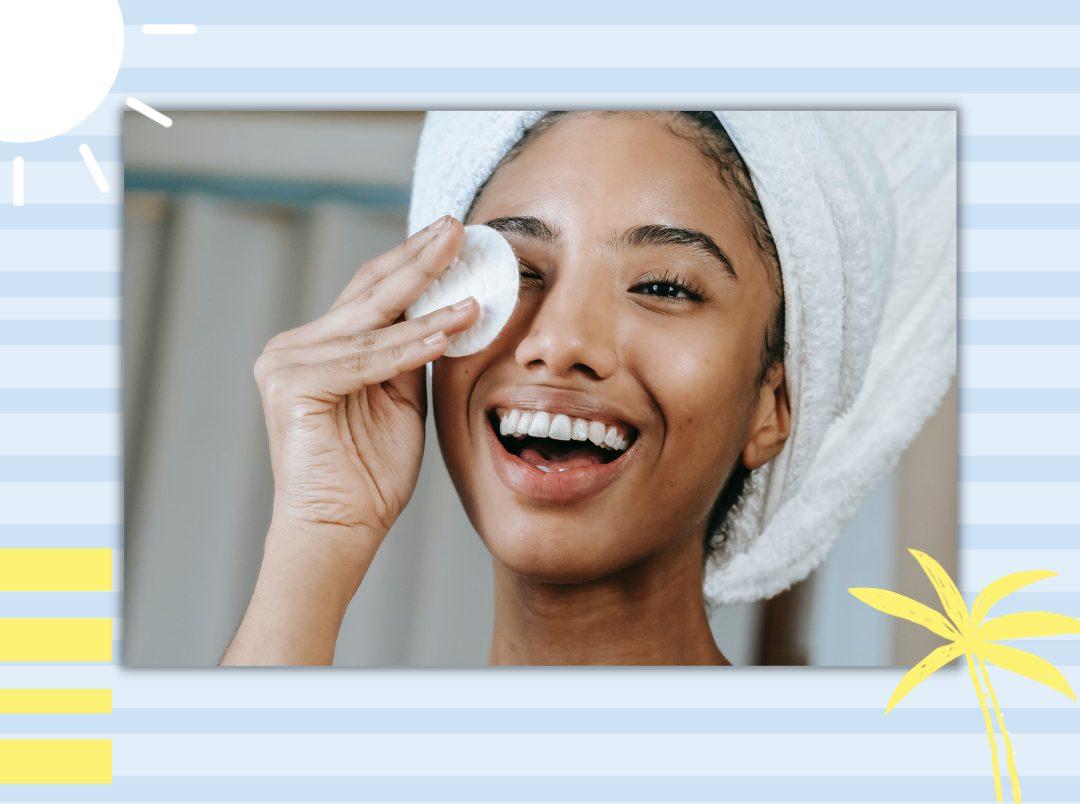A rapidly growing number of popular skincare products now contain chemical exfoliants. AHAs and BHAs are fantastic skincare chemicals, but before applying these sensitising acids, it’s crucial to read up on how to protect your skin from sun damage. Hence, we’ve done the hard work for you and researched about how we can mix AHAs or BHAs with sunscreen. Read on.
What Are AHAs & BHAs?

Alpha hydroxy acids (AHAs) and beta hydroxy acids (BHAs) are two types of derm-approved acids that can be applied to the skin. They help remove old, dead skin from the face, primarily (but not only) so that new, healthy skin can show through and other products, like moisturiser and makeup, may be applied more evenly. Let’s examine what AHAs and BHAs do and how they do it as they have distinct tasks and roles to play.
Do AHAs & BHAs Increase Sun Sensitivity?
By applying Glycolic acid (an AHA) and salicylic acid (a BHA) to 14 participants daily for three and a half weeks, researchers were able to assess if BHAs and AHAs induce higher UVB skin damage.
The Glycolic acid approach increased sensitivity and caused the cells to get sunburnt faster. This water-soluble AHA exfoliates the skin and eliminates the skin’s protective top layers. These thinner skin layers are consequently more vulnerable to sun damage.
Salicylic acid is an oil-soluble BHA that gently exfoliates the skin’s surface before penetrating deeper into the pores to exfoliate excess oil and sebum.
The test locations treated with salicylic acid showed no increase in sun damage! Indeed, studies have revealed that the BHA salicylic acid can be photo-protective.
Is It Necessary To Apply Sunscreen After Using AHAs?

Alpha hydroxy acids, such as glycolic acid, have been demonstrated to increase the risk of sun damage and can actually worsen sun-induced pigmentation. After using any AHA in your skincare routine, always wear sunscreen with an SPF of 30 or higher.
Experts advocate for limiting your use of chemical exfoliants to your nightly skincare routine. This protects your skin from sun exposure when using these sensitising products, allowing you to focus on hydrating and protective formulas during the day.
Can AHAs & BHAs Be Used Together In Skincare?
You may be asking if you can combine AHAs and BHAs at this point. Yes, in a nutshell! In fact, they can offer skin a one-two punch by providing a surface cleansing (AHAs) and then diving much deeper into the skin (BHAs) and removing the debris and muck that gets lodged in pores.
If you’re concerned about applying one acid on top of another, don’t be! In effect, AHAs and BHAs do two different duties; consider this: you would never use a wet mop to clean a floor without first sweeping it, and you would probably not be concerned about whether or not it was too much cleaning. The AHAs and BHAs work very much the same way.
But, but, but… If you venture out, you MUST apply sunscreen (with any exfoliator, but especially with anything like salicylic acid). Getting rid of old, dead skin improves the appearance of skin and makes it more prone to skin injury. Make up for this by using sunscreen when you go outside; you’ll be less likely to get sunburned!
Conclusion:
You must apply sunscreen with AHAs and BHAs regardless of how you use them since exfoliation leaves the skin more prone to UV damage.
SPF is your BFF at all times!
Featured Image: Instagram




.png)




